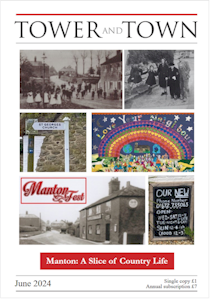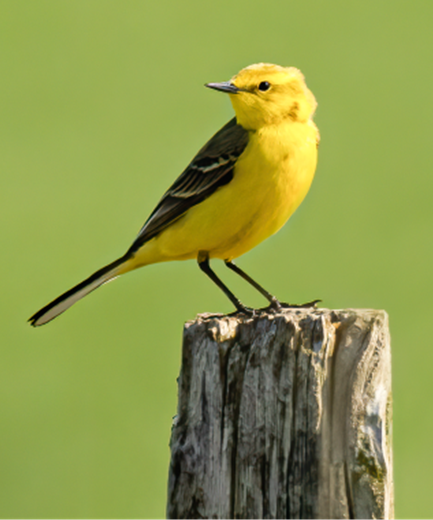

Tower and Town, June 2024 (view the full edition) (view the full edition)Nature Notes: The WagtailsOf the three Wagtail species occurring in the U.K. the Pied Wagtail is the most familiar. You might see him in a supermarket car-park, on a freshly mown cricket pitch or a barn roof, invariably searching for insects. John Clare's poem captures his character nicely: "Little trotty wagtail, he went in the rain,/And tittering, tottering sideways he ne'er got straight again" There is something comical about its erratic gait, with the characteristic tail-bobbing and sudden sallies back and forth. I like the humorous nickname it has acquired, referencing its melodious call: "The Tchizzik Flyover!" Grey Wagtails are rarer, with a population of just 38,000 breeding pairs in the UK. They breed in places adjacent to running water and this explains their patchy distribution. We are lucky in Wiltshire to have chalk streams and stretches of canal, with small weirs, mill-stream runs and lock gates. Above the sound of running water, the silvery calls and striking appearance of a male Grey Wagtail on a grassy bank offers the perfect complement to the scene: grey back, yellow underparts, a black bib and the long tail constantly flickering up and down. On a local walk along the Wansdyke in late spring the birds are demanding my attention: the Skylark with its never-ending roulades of song, a Meadow Pipit perfecting his "parachute display" and a Corn Bunting "jangling" from the top of a hawthorn bush. Then, suddenly, on the ground or on a fence-wire perch, a small, slim bird with an eye-catchingly brilliant yellow breast announces his presence with a soft "tslie" call - a Yellow Wagtail, my personal favourite of the wagtail tribe. It's a summer visitor, arriving in April and returning to its wintering quarters in Africa in September. The guide books will tell you it breeds on lush, damp meadowland, but in recent decades it has taken to making its nest in cereal crops, for example in our local Marlborough and Pewsey Downs and on the margins of Salisbury Plain. There may be manure piles providing insects and grubs and muddy puddles on the path, but this species is less dependent on the presence of neighbouring water.  Yellow Wagtail by David White On my walk I will encounter several pairs, for Yellow Wagtails often nest in small colonies, but only too soon the season is over and family groups will begin to appear on nearby barn roofs, searching for insects, the young ones paler than the adults, but still dainty and attractive alongside the commoner pied wagtails. Robin Nelson |